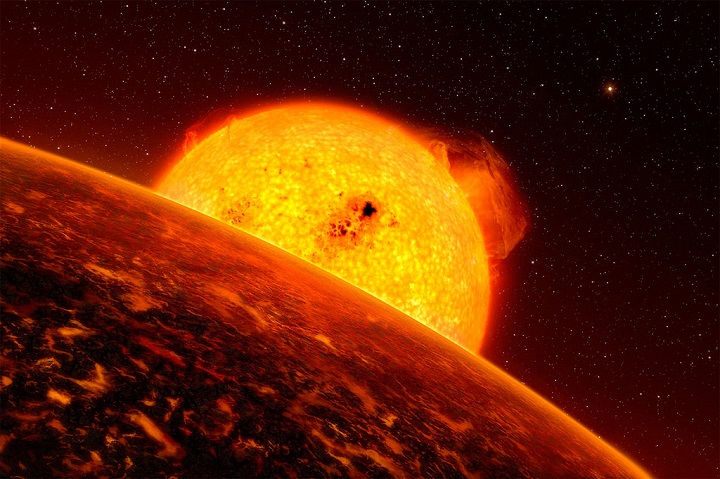While Sun is the center of our Universe and our existence it is not the only star. This Universe is unending. There are many other stars like Sun in the Universe. The planet revolving around these stars are called Exoplanets or Extra Solar planets. Do these planets have life? Maybe, but we do not know for sure. The scientists had started making discoveries about exoplanets in 1988, but nothing was concrete until 1995 when two scientists from the University of Geneva detected an exoplanet orbiting around a star, named 51 Pegasi. The initial exoplanets that were found orbited very close to their star and were really big gas giants. These “hot Jupiters” confounded the scientists as they thought that the gas giants should have formed at a large distance from their star and not so close. With advanced technology astronomers were able to find smaller planets also. Soon with the discovery of other planets it was found that these planets were very less. The first multiple planet system found in 1999 was Upsilon Andromedae, a binary star system.
So far we have discovered 1103 planetary systems out of which 460 are multiple planet systems. Is any one of those planets like Earth? That question still needs to be answered. Our Earth is very unique, the hunt to find any other planet that is as special as Earth is still on.
How did we discover these planets? There are many ways in which these exoplanets can be detected.
Advertisement
- Transit – This method is used to find out planets around a star. How? Well, the scientists observed the star. When the planet orbits around this star, there is a time when it passes in front of its star. The planet is called to be in transit. Depending on how much light is blocked from the star, the scientists are able to estimate the size of the planet and the length of the orbit. You can actually see the planets of our solar system also in transit.
- Radial Velocity – The light waves from a star in relation to its planets are observed for a long time. This data is used to figure out the existence of the planets, its size and distance from the star.
- Astrometric Measurement – It is all about gravity. We all know how important the force of gravity is. So the exoplanets are also exerting a gravitational pull on the star under observation. The star moves to and fro or wobbles because of this force, giving scientists enough information to get more information.
- Direct detection – Try looking out at the sky and see if you find anything with the naked eye or Earth telescopes.
- Discovery by Space Telescope – Many Space telescopes have been launched to gather information about space. On March 6, 2009, NASA launched a special telescope project named Kepler project. This telescope found earth like planets that are now in Kepler 62 system. Hubble Space Telescope, CoRot missions, are a few of missions devoted to finding exoplanets. A new generation of telescopes will be launched that not only find planets but also the presence of gases like ozone.
Amazing facts –
- A free floating planet has been discovered with no Sun.
- A planet that is bigger than Earth and made up of diamonds ;)) You would love to visit that wouldn’t you?
- Our galaxy is called milky way. Scientists have found a Super mom galaxy, a mother of all galaxies.





Leave a Reply